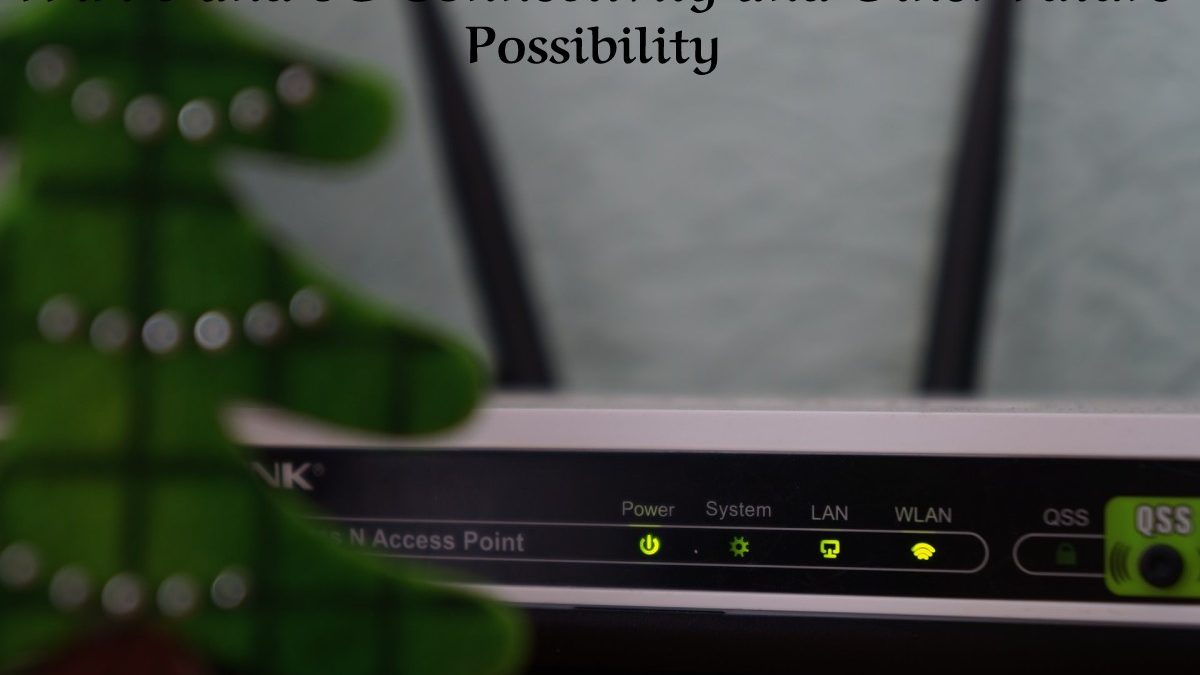WiFi 6 and 5G: WiFi 6, based on the IEEE 802.11ax average, will deliver 4x higher capacity and 75 percent lower expectancy, offering nearly triple the speed of its predecessor, WiFi 5. As a result, anyone can operate a WiFi network—and most of us have one in our homes and offices, connected to broadband service.
Table of Contents
WiFi 6 and 5G Connectivity and Other Future Possibility
5G rollout will expedite the new infrastructure age. However, another communication technique comes to mind: WiFi 6. Coexistence or Competition? What type of future connection will the two have?
Although the idea and implementation of 5G have widely publicize, some individuals may be unfamiliar with Wifi6. It is, in reality, a protocol, the WiFi 6 device protocol: Low-latency network connection and high-speed network communication. Wifi6 create for the Internet of Everything era, with the capacity to enable more device connections and more consistent transmission.
5G and the Technologies that Support it
Let’s begin with the fifth generation of mobile networks. 5G has advanced characteristics that earlier generations lacked, such as ultra-fast communication due to decreased latency & 5G wholesale led is also available in the market. High performance, efficiency, and dependability are all advantages of 5G, and it meets the connection needs of large numbers of IoT devices, objects, and machines.
Orthogonal frequency-division multiplexing (OFDM) and the 5G new radio (NR) air interface are the core technologies of 5G. OFDM is a technique for reducing interference by modulating digital signals over several channels. 5G also employs technologies with a broad bandwidth, such as Sub-6 GHz and mmWave, which are very fast but have a relatively limited range.
With the launch of new wireless standards such as WiFi 6, companies will soon be able to link tens of thousands of devices that may use to monitor different patient health parameters. These sensors might also connect directly to one another, enabling the flow of data between devices to be very rapid and efficient.
Hundreds of thousands of connected IoT sensors might utilize for several reasons, like monitoring blood pressure or heart rate, testing urine for kidney function, and even monitoring skin tissue oxygenation levels!
WiFi 6 is Capable of Connecting to Multiple Devices
As previously said, WiFi 6 design to connect everything. Therefore the number of linked devices is an advantage of the technology. Unfortunately, even though the previous router could be related to several devices, the network speed decreases as the number of connected devices increases. It is primarily due to insufficient signal channels on the router’s side of the equation.
Regardless of how many devices you join the network, the channels are already total, and network performance degrades. The WiFi 6 era, on the other hand, will eliminate this issue. In addition, the multi-channel approach ensures that network connection is maintained for all connected devices, resulting in considerable latency reduction.
A Few Examples of 5G-Related Use Cases
For various reasons, such as content creation and consumption, a faster mobile device connection is preferable. More immediate video traffic, for example, enhances the experience of watching media and entertainment content. Video streaming, social networking, banking, food delivery, e-commerce, and retail will benefit from 5 G’s capacity to transmit up to 20 Gigabits per second.
5G will be crucial for mission-critical communications, such as remote healthcare, security, autonomous cars, and smart city infrastructure monitoring. It also links the IoT devices, sensors, and equipment used in manufacturing, automobile security, aviation, military, and healthcare.
5G offers a broad range of applications because of its excellent performance, dependability, and efficiency. It links IoT devices and allows businesses to construct and deploy private 5G wireless networks. As a result of its long-term influence on manufacturers, operators, content providers, app developers, and consumers, 5G is becoming a vital driver of global economic development. It will power everything from edge and cloud computers to innovative automobiles and artificial intelligence.
WiFi 6 vs. 5G: Defining Differences and the Need for Both
While the latest WiFi and cellular technology generations — WiFi 6 and 5G, respectively — have pitte against one another, the technologies make better friends than foes.
Together with cellular and wireless LAN, or WLAN, have introduced new technology generations, and the time has arisen for the technologies to join forces rather than kindle a competition.
While several differences between WiFi 6 and 5G exist, these are primarily standard differences between cellular and WiFi technologies. WiFi 6 and 5G are so similar that experts suggest governments shouldn’t mine the two skills against each other but instead notice ways for WiFi 6 and 5G to work together.
WiFi 6 aims to stand out from past generations in the WiFi world, bringing a new generational naming system, increased IoT competencies, and multiuser support. For cellular, 5G introduces superfast network speeds cellular technology hasn’t seen before, low latency, and faster download speeds.
Comparing the Differences between WiFi 6 vs. 5G

The Key Differences between WiFi 6 vs. 5G include the following:
- Technology Type
- Licensing
- Authentication
- Network Security
- Use Cases
WiFi 6, 5G as Complements Rather than Competitors
Despite the differences between WiFi 6 vs. 5G, many experts tout the potential benefits of a partnership between the two technologies. According to Craig Mathias, a principal with Farpoint Group, businesses should focus more on how WiFi 6 and 5G cooperate rather than which technology is better. More importantly, users likely won’t care which technology they use as long as their connection is good.
Interoperability between WiFi and 5G networks could provide seamless connectivity for users as they move between networks. In addition, connected devices such as business handsets may be able to support both technologies, Mathias predicted. Although this level of cooperation is years away from reality.
Together, WiFi 6 and 5G can enable the success of network innovations, such as IoT growth and edge computing capabilities. In addition, WiFi 6 and 5G can better support remote workforces. And bolster overall network connectivity with speed, reliability, and flexibility.
Conclusion
It means that 5G and WiFi 6 will be critical technologies for supporting various Internet of Things applications. For example, home automation systems will rely on fast data speeds to enable features like remote video chatting, smart locks, and even the ability to turn on appliances with your voice.
Also Read: What are Link Building Services?

